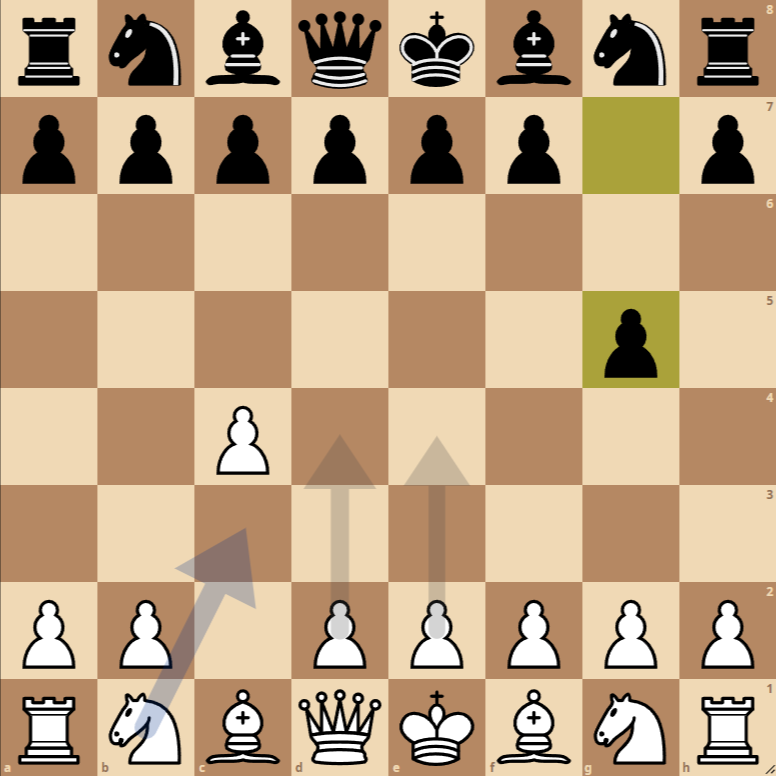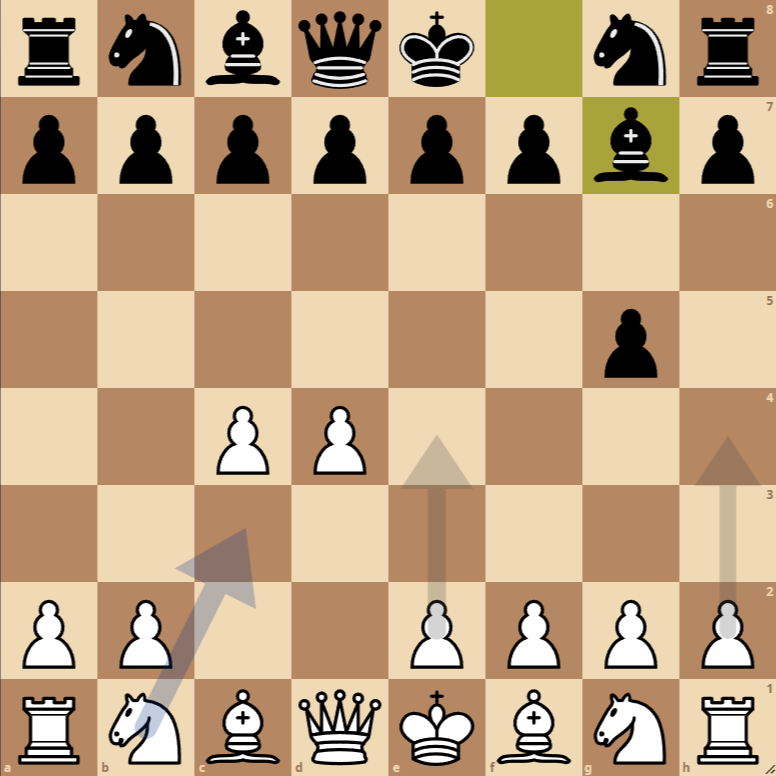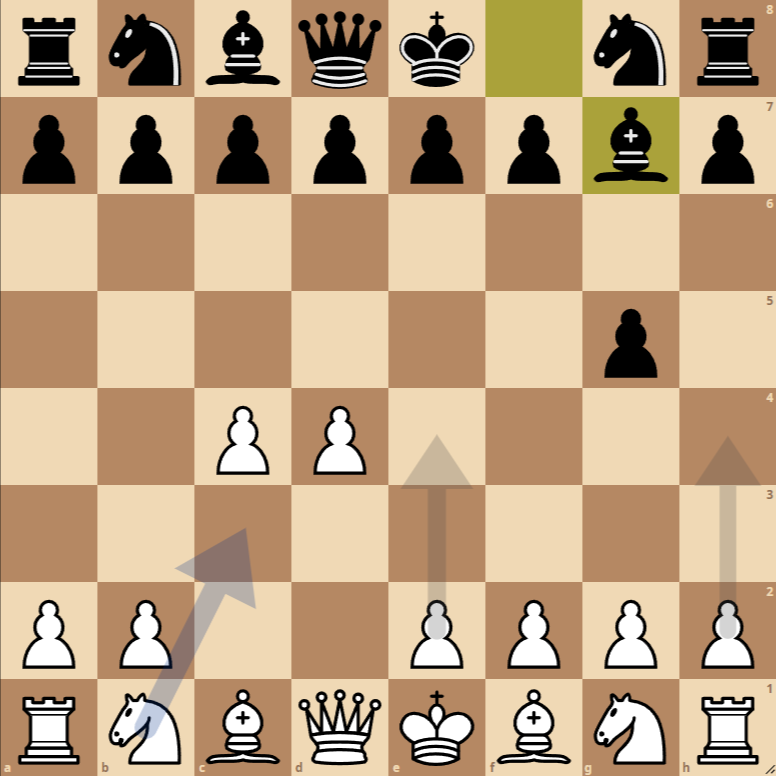How to Play the English Opening: Myers Gambit


- 1. c4: White starts with the move pawn to c4, aiming to control the center from the flank. This is the classic beginning of the English Opening, seeking flexibility and spatial control.
- 1… g5: In response, Black plays g5, an unconventional and aggressive move that initiates the Myers Gambit. The goal is to disrupt the typical structure of the English Opening and create an asymmetric game.
- 2. d4: White continues with d4, strengthening their presence in the center and directly challenging Black’s flank.
- 2… g7: Black develops their bishop to g7, supporting their pawn on g5 and preparing for a long castling. This move also exerts pressure on the center from the flank.
Variants of the English Opening: Myers Gambit
Variant 1: 2… h6
An alternative for Black is 2… h6, aiming to solidify the pawn on g5. This variant can lead to more closed pawn structures and a more tactical game on the king’s side.
Variant 2: 2… f5
Black can choose 2… f5, reinforcing control over the center and preparing for a possible advance on the king’s side. This line is more aggressive and can lead to complex tactical battles.
Variant 3: 2… d6
Another possibility is 2… d6, a more conservative move that supports the pawn on g5 and aims for a harmonious piece development. This variant favors a quieter positional game.

